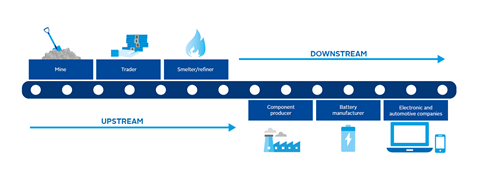ASM: Carried out informally by individuals or communities using manual labour and hand tools. 20% of the cobalt sourced from the DRC is mined this way.
Large-scale mining (LSM): Industrial mining that represents 80% of the cobalt sourced from the DRC.
LSM and ASM supplies can sometimes become intertwined as traders may sell ASM-produced cobalt to medium-size industrial mining companies to top up their own production. Despite this, each have their own unique risks:
LSM-related risks:
- Miners and local communities are often exposed to high levels of toxic metals - medical studies have shown the link between the presence of mines with birth defects and other health hazards.
- Poor occupational health and safety conditions such as inadequate protective equipment.
- Poor community relations e.g. reports of forced evictions around the mines.
- Potential for human rights violations by private/public security personnel when preventing ASM miners from going into LSM sites.
ASM-related risks:
- Child labour: in 2012, UNICEF estimated that 40,000 children worked in the country fs south mining industry. Since then, and despite the DRC government fs commitment to eradicate child labour, reports do not indicate that this number has gone down.
- Working conditions: lack of oversight from relevant authorities means that the tunnels mined by artisanal miners often exceed the 30-metre depth limit; no health and safety standards are respected, exposing the miners to injuries, deadly accidents and health hazards, given their prolonged exposure to dangerous metals.
- Unfair compensation of miners (with traders relying on asymmetry of information).
- Legality of mining (with lack of formalised/regulated artisanal mining areas): regulated ASM operations are in the minority . many ASM mines are dug and operated illegally and without oversight, sometimes on larger LSM concessions.
How investors can promote responsible cobalt sourcing practices
- 1
- 2
- 3
- 4
- 5
Currently reading
Risks in the upstream cobalt supply chain
- 6














